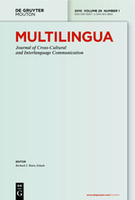
Multilingua-Journal of Cross-Cultural and Interlanguage Communication
Scope & Guideline
Cultivating Knowledge Across Linguistic Boundaries
Introduction
Aims and Scopes
- Multilingual Communication:
The journal investigates how individuals navigate communication in multilingual settings, examining both verbal and non-verbal aspects of interaction. - Language Ideologies:
A critical analysis of the beliefs and values surrounding languages, including how ideologies influence language use, policies, and identity formation. - Translanguaging Practices:
Exploring the fluid use of multiple languages in communication, the journal studies how translanguaging functions in educational, social, and professional contexts. - Impact of Globalization on Language:
Research on how globalization affects language practices, including language shift, maintenance, and the emergence of new linguistic norms in multicultural environments. - Language Policy and Planning:
The journal focuses on the implications of language policies in various settings, including education and migration, and their role in fostering linguistic diversity. - Heritage Language Maintenance:
Exploring the challenges and strategies involved in maintaining heritage languages within families and communities, particularly in diasporic contexts.
Trending and Emerging
- Impact of COVID-19 on Language Practices:
Research on how the pandemic has reshaped communication norms, language learning, and family language policies, reflecting urgent societal changes. - Linguistic Diversity and Inclusion:
An increasing focus on the role of language in fostering social inclusion, equity, and representation, particularly in multicultural contexts. - Intersectionality in Language Studies:
Emerging studies that analyze language through the lens of intersectionality, considering how factors like race, gender, and migration status influence language use and identity. - Digital Communication and Social Media:
Exploration of how digital platforms and social media are transforming language practices, including the use of translanguaging and hybrid language forms. - Language and Mental Health:
Research investigating the relationship between language use, cultural identity, and mental health, particularly in marginalized communities.
Declining or Waning
- Traditional Language Teaching Methods:
There has been a decrease in papers focused on conventional language teaching methodologies, as the discourse shifts towards more dynamic and integrative approaches such as translanguaging. - Monolingualism in Education:
Research emphasizing monolingual approaches in educational settings appears to be waning, as the focus increasingly turns towards multilingual and inclusive pedagogical practices. - Static Language Identity Models:
The exploration of fixed or static models of language identity is less prevalent, with contemporary research favoring fluid and intersectional understandings of identity. - Bilingualism as a Deficit Model:
The framing of bilingualism as a challenge or deficit is diminishing, replaced by a more positive view that highlights the benefits of multilingualism and diverse linguistic repertoires. - Linguistic Purism:
The focus on linguistic purism and ideologies that promote a singular standard language is declining, as the journal embraces more pluralistic and inclusive perspectives.
Similar Journals

GEMA Online Journal of Language Studies
Unveiling New Perspectives in Language Studies.GEMA Online Journal of Language Studies, published by Penerbit Universiti Kebangsaan Malaysia, is a prominent open-access journal dedicated to advancing research in the fields of Linguistics, Language, and Literature. Since its inception in 2001, the journal has been committed to providing a platform for scholarly articles that push the boundaries of knowledge and foster dialogue among professionals, researchers, and students alike. With its impressive impact reflected in the 2023 Q1 category rankings in both Linguistics and Language as well as Literature and Literary Theory, GEMA has established itself as a leading authority, achieving a notable rank of #17/1106 in its fields on Scopus, reflecting its high percentile of 98. The journal spans an extensive range of topics relevant to language studies, emphasizing integration and innovation from 2009 to 2024. Researchers looking to disseminate their findings or keep abreast of the latest developments will find GEMA an invaluable resource in the pursuit of academic excellence and a deeper understanding of language dynamics.
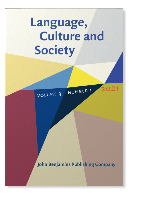
Language-Culture and Society
Bridging Theory and Practice in Multilingual ContextsLanguage-Culture and Society is a premier academic journal dedicated to advancing the understanding of the intricate relationships between language, culture, and society. Published by the esteemed John Benjamins Publishing Co in the Netherlands, this journal has quickly established itself as a leading platform since its inception in 2019, achieving a notable Q1 ranking in Linguistics and Language as of 2023. With a focus on interdisciplinary studies, Language-Culture and Society invites researchers, practitioners, and students to contribute and explore themes such as linguistic diversity, cultural identity, and communication practices. Despite being a non-open access publication, the journal provides unparalleled access to high-quality research articles that significantly impact the fields of linguistics and social sciences. The journal's robust Scopus rankings, placing it in the top percentiles of both Arts and Humanities and Social Sciences categories, underline its importance and relevance in contemporary linguistic discourse. Join the expanding community engaged in scholarly discussion through this vital resource, bridging the gap between theoretical insights and practical applications in today's multilingual societies.

Journal of Research in Applied Linguistics
Innovating Language Studies for TomorrowJournal of Research in Applied Linguistics is an esteemed academic journal published by Shahid Chamran University Ahvaz, Iran, focusing on the dynamic field of linguistics and language studies. With an ISSN of 2345-3303 and an E-ISSN of 2588-3887, the journal has established itself as a valuable resource for researchers and professionals aiming to explore diverse issues related to applied linguistics, including language acquisition, pedagogy, and sociolinguistic interactions. As part of a robust academic community since its inception in 2017, it is recognized with a Q2 quartile ranking in the world of linguistics and achieved impressive Scopus ranks reflective of its growing impact, particularly within the arts and humanities. The journal embraces an open access policy, enhancing its reach and availability to a broad audience. Researchers, educators, and students alike will find in the Journal of Research in Applied Linguistics a critical platform for dialogue, innovation, and contribution to the evolving landscape of language research.

Slovo a Slovesnost
Fostering Dialogue in the World of LinguisticsSlovo a Slovesnost is a prominent academic journal dedicated to the field of linguistics and language studies, published by the Czech Language Institute of the Czech Academy of Sciences. With an ISSN of 0037-7031, the journal has established itself as a significant resource for researchers and professionals within the linguistic community. Its rigorous selection process and impactful contributions have earned it a commendable Q2 ranking in Linguistics and Language as of 2023, as well as Scopus rankings in the 58th percentile for Language and Linguistics. Offering insights into both theoretical and applied linguistics, Slovo a Slovesnost serves as an essential platform for cutting-edge research, fostering dialogue among scholars, and enriching the study of language within the Czech Republic and beyond. Although it does not provide open access, the journal supports a subscription model that ensures high-quality dissemination of knowledge to a dedicated audience of linguists, educators, and linguistic scholars. With coverage converging from 2004 to 2024, it continues to thrive as a vital corner of linguistic scholarship.
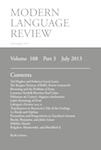
MODERN LANGUAGE REVIEW
Advancing Insights in Linguistics and Literary TheoryMODERN LANGUAGE REVIEW, published by the Modern Humanities Research Association, is a pivotal academic journal based in the United Kingdom, focusing on the fields of linguistics, literature, and literary theory. With an ISSN of 0026-7937 and an E-ISSN of 2222-4319, this journal serves as a platform for disseminating research that explores the nuances of language and its literary contexts. Although currently not an open-access publication, it provides valuable insight into a range of topics, contributing to a deeper understanding of human communication and expression. Covering a wide scope with a publication history from 2002 to 2024, the journal is indexed in Scopus and holds a Q4 ranking in both linguistics and literature categories, indicating its emerging influence within these academic disciplines. As the landscape of humanities research continues to evolve, MODERN LANGUAGE REVIEW remains a vital resource for scholars, professionals, and students aiming to engage with contemporary debates and developments in language and literature.
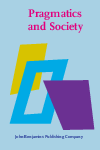
Pragmatics and Society
Fostering Scholarly Dialogue on Language in ContextPragmatics and Society, published by John Benjamins Publishing Co, is an esteemed journal that serves as a vital platform for the interdisciplinary exploration of language use in social contexts. Established with the aim of bridging the gap between pragmatics and social theory, this journal covers innovative research and critical methodologies within linguistics and language studies. With an impressive impact factor and recognition as a Q2 journal in the field of Linguistics and Language for 2023, it ranks notably within the 75th percentile for Arts and Humanities and 73rd for Social Sciences. Based in the Netherlands, Pragmatics and Society is dedicated to fostering scholarly discussions and advancing knowledge in areas such as discourse analysis, sociolinguistics, and communicative practices. Researchers, professionals, and students alike will find this journal to be an invaluable resource for understanding the complexities of language in society and are encouraged to engage with its rigorous publications.
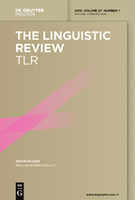
LINGUISTIC REVIEW
Unveiling Insights in Linguistics and Language.LINGUISTIC REVIEW is a prestigious academic journal published by De Gruyter Mouton that has established itself as a leading platform in the field of Linguistics and Language. With an impressive impact factor and categorized in the Q1 Quartile for the year 2023, this journal ranks within the top tiers of its discipline, indicating its influential contributions to linguistic research. Covering an extensive range of topics from theoretical frameworks to applied linguistics, the journal aims to foster scholarly dialogue and advance the understanding of language in its myriad forms. Researchers and students alike will benefit from the rigorous peer-review process and the availability of in-depth studies published from 1981 onwards. While the journal is not open access, it is renowned for its exceptional quality and relevance in both the Arts and Humanities and Social Sciences classifications, with Scopus rankings placing it in the top percentile of its peers. By offering insight from leading scholars, LINGUISTIC REVIEW remains an indispensable resource for those who are passionate about linguistic inquiry and its real-world applications.
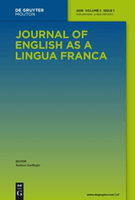
Journal of English as a Lingua Franca
Unlocking the Power of English in Multilingual ContextsJournal of English as a Lingua Franca, published by WALTER DE GRUYTER GMBH, stands at the forefront of academic discourse in the fields of linguistics and communication. With an impressive impact factor placed in the Q1 and Q2 quartiles for Linguistics and Communication respectively, this journal serves as a critical platform for researchers and educators interested in the dynamics of English as a global lingua franca. Since its inception in 2012, the journal has actively contributed to the understanding of language use across diverse communities and contexts, addressing the implications of English as a shared mode of communication. Housed in Germany, the journal's open-access model fosters accessibility and encourages knowledge sharing within the global academic community. By providing rigorous peer-reviewed articles, the Journal of English as a Lingua Franca remains an essential resource for those committed to advancing research in this vibrant linguistic landscape.
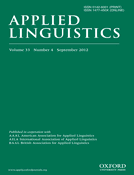
APPLIED LINGUISTICS
Innovating Research in Applied LinguisticsApplied Linguistics, published by Oxford University Press, is a premier scholarly journal that has significantly contributed to the fields of linguistics and communication since its inception in 1980. With an impressive impact factor and ranked in the top quartile (Q1) in both Communication and Linguistics and Language categories, Applied Linguistics is recognized for its rigorous peer-reviewed articles that explore the intersections of language, society, and cognition. The journal enjoys a remarkable position in the Scopus rankings, placing it among the top 2% of publications in its discipline. Researchers, professionals, and students benefit from its comprehensive scope, which encompasses innovative research on language acquisition, discourse analysis, and applied linguistics methodologies. Although not an open access journal, its commitment to advancing knowledge and fostering academic discussions makes it an indispensable resource for anyone interested in the critical role of language in various contexts.
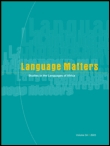
Language Matters
Unveiling the Power of Language DynamicsLanguage Matters is a prestigious journal dedicated to the dynamic field of Linguistics and Language, published by Routledge Journals, Taylor & Francis Ltd in the United Kingdom. With an ISSN of 1022-8195 and an E-ISSN of 1753-5395, this journal serves as an essential platform for scholars seeking to explore the multifaceted relationships between language and society. Recognized in the 2023 Category Quartiles as Q2 in Linguistics and Language, it boasts impressive Scopus rankings, sitting at #298 out of 1088 in the Arts and Humanities category and #356 out of 1167 in Social Sciences, highlighting its significant impact on the field with a 72nd and 69th percentile ranking, respectively. The journal's scope encompasses a wide range of topics including language acquisition, sociolinguistics, and psycholinguistics, making it a vital resource for researchers, educators, and students alike. By not offering open access, it maintains a curated selection of high-quality peer-reviewed articles, ensuring that academic rigor and relevance are upheld for its readership. With a publication range spanning from 1993 to 2024, Language Matters continues to shape conversations and advance knowledge in the ever-evolving landscape of linguistic research.